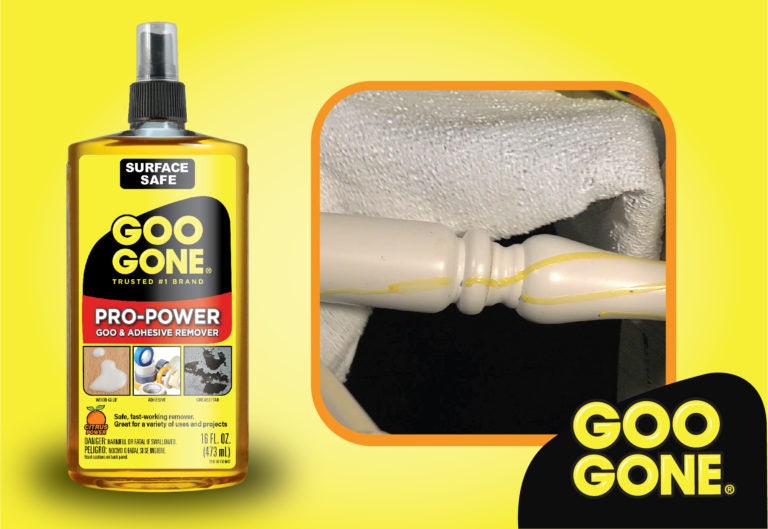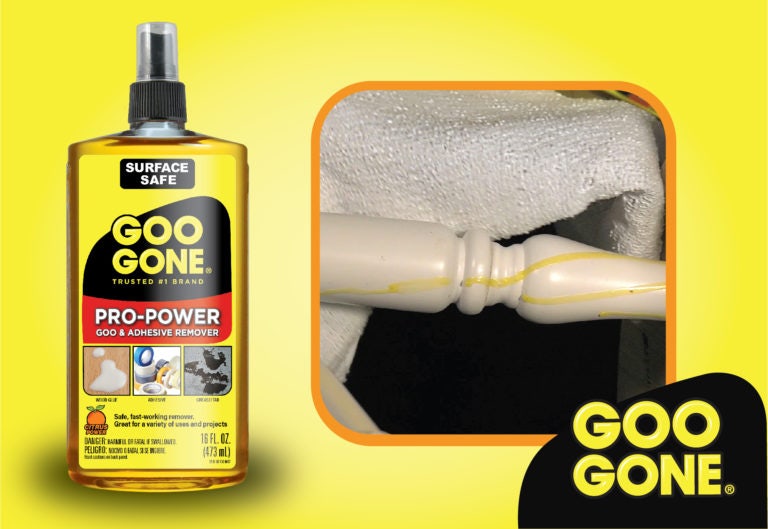When it comes to DIY projects, we often find ourselves faced with unexpected challenges. One of these can be removing wood glue. But wait, here’s a question for you: does paint thinner remove wood glue? Stick around as we dive into this handy guide and find out the answer.
Well, the short answer is, yes, paint thinner can indeed help remove wood glue. But before we jump right into it, let’s explore why wood glue can be a bit tricky to tackle in the first place.
Now, you might be wondering, “How does paint thinner actually work to remove wood glue?” Well, let’s unravel this mystery together and discover everything you need to know. So, grab your goggles, put on your thinking caps, and let’s get started!
Looking to remove wood glue? Wondering if paint thinner does the trick? While paint thinner can be effective in some cases, it’s not always the best solution. Instead, consider using methods like heat or vinegar to soften the glue, then scrape it off. Alternatively, you can try using a commercial adhesive remover specifically designed for removing glue. Experiment with different techniques to find the one that works best for you!

Does Paint Thinner Remove Wood Glue?
Wood glue is commonly used in various woodworking projects to secure pieces of wood together. However, sometimes mistakes happen, and you may find yourself needing to remove excess or dried wood glue from your project. One common question that arises is whether paint thinner can effectively remove wood glue. In this article, we will explore the effectiveness of paint thinner in removing wood glue and provide you with tips and alternatives to consider.
Understanding Wood Glue and Paint Thinner
Before we delve into the topic of whether paint thinner can remove wood glue, it is essential to understand what wood glue and paint thinner are. Wood glue, also known as carpenter’s glue or PVA glue (Polyvinyl Acetate), is a type of adhesive specifically designed for woodworking projects. It bonds wood fibers together, creating strong and durable connections. On the other hand, paint thinner is a solvent commonly used to thin oil-based paints and clean brushes or other tools. It is typically made up of a mixture of organic solvents such as mineral spirits, toluene, or acetone.
Can Paint Thinner Effectively Remove Wood Glue?
The effectiveness of paint thinner in removing wood glue depends on several factors, including the type of wood glue used and the specific paint thinner being used. In general, paint thinner can soften and dissolve certain types of wood glue, making it easier to remove. However, it may not work effectively on all types of wood glue or if the glue has dried completely. It is important to note that using paint thinner on wood surfaces may also damage or discolor the wood finish, so caution is advised. It is always recommended to test the paint thinner on a small, inconspicuous area of the wood before applying it to the entire surface.
If you decide to use paint thinner to remove wood glue, here are some steps to follow:
- Ensure proper ventilation in your workspace and wear appropriate protective gear, such as gloves and eye protection.
- Dampen a clean, lint-free cloth with the paint thinner.
- Gently rub the cloth on the wood glue, applying moderate pressure.
- Allow the paint thinner to sit on the wood glue for a few minutes to soften it.
- Use a plastic scraper or a soft-bristle brush to gently scrape away the softened glue.
- Wipe the area clean with a damp cloth or sponge.
- Repeat the process if necessary.
Tips for Removing Wood Glue
1. Use Acetone
In addition to paint thinner, acetone can also be effective in removing wood glue. Acetone is a strong solvent that can break down many types of adhesives, including wood glue. Follow similar steps as mentioned earlier when using acetone, and always test it on a small area of the wood first.
2. Mechanical Removal
If the wood glue has dried and is difficult to remove, mechanical methods may be necessary. You can use a chisel, scraper, or sandpaper to carefully remove the dried glue, taking care not to damage the surrounding wood. This method requires patience and precision, as excessive force or improper technique can leave marks or gouges on the wood surface.
3. Heat and Steam
Applying heat and steam to the wood glue can soften it and make it easier to remove. Use a heat gun or a steam iron wrapped in a damp cloth and apply it to the glue, being careful to avoid direct contact with the wood surface. Once the glue softens, gently scrape it away with a plastic scraper or a soft cloth.
Conclusion
While paint thinner can be effective in removing certain types of wood glue, caution should be exercised due to the potential damage it may cause to the wood finish. It is always recommended to test the paint thinner on a small area first and to consider alternative methods such as acetone, mechanical removal, or heat and steam for more stubborn or dried wood glue. Remember to work in a well-ventilated area and protect yourself with appropriate gear. With the right approach, you can successfully remove wood glue and achieve the desired finish on your woodworking project.
Key Takeaways: Does Paint Thinner Remove Wood Glue?
- 1. Yes, paint thinner can remove wood glue from surfaces.
- 2. Apply the paint thinner to a cloth and gently rub the wood glue stain.
- 3. Always test the paint thinner on a small, inconspicuous area first to ensure it doesn’t damage the wood.
- 4. Use a scraping tool or sandpaper to remove any remaining glue residue.
- 5. After removing the glue, clean the surface thoroughly with mild soap and water.
Frequently Asked Questions
Are you wondering if paint thinner can remove wood glue? Check out these FAQs to find out more!
Can I use paint thinner to remove wood glue?
Yes, paint thinner can be effective in removing certain types of wood glue. However, it is important to note that not all wood glues are the same. Some are water-based, while others are solvent-based. Paint thinner, which is a strong solvent, is generally more effective in removing solvent-based wood glue.
Before using paint thinner, it’s essential to check the label of the wood glue to determine if it is solvent-based. If it is, you can apply a small amount of paint thinner to a cloth and gently rub the area where the glue is located. Be sure to test it on a small, inconspicuous area first to ensure it doesn’t damage the wood surface.
What should I do if the wood glue is water-based?
If the wood glue is water-based, paint thinner may not be as effective in removing it. Water-based wood glues are typically designed to be more resistant to solvents, including paint thinner. In this case, using paint thinner may not produce the desired result.
Instead, when dealing with water-based wood glue, it is best to follow the manufacturer’s instructions for removal. This may involve using warm soapy water, a putty knife, or gentle scraping. It’s important to be patient and avoid using excessive force, as this can damage the wood surface.
Are there any alternatives to paint thinner for removing wood glue?
Yes, there are alternative methods you can try if paint thinner is not suited for removing wood glue. One alternative is to use acetone, which is commonly found in nail polish remover. Acetone is effective for removing solvent-based wood glue, but like paint thinner, it may not work as well on water-based glues.
Another alternative is to use heat. You can use a heat gun or a hairdryer to gently heat the area with the wood glue. As the glue softens, you can carefully scrape it off with a putty knife. However, be cautious when using heat to avoid scorching or damaging the wood.
Will using paint thinner damage the wood surface?
It’s important to be cautious when using paint thinner on wood surfaces. While paint thinner can effectively remove wood glue, it also has the potential to damage certain types of wood finishes or surfaces. Before using paint thinner, test it on a small, inconspicuous area to ensure it doesn’t cause any adverse effects.
If you’re uncertain about using paint thinner, it may be best to consult a professional or follow the manufacturer’s instructions for removing the wood glue. They may be able to provide specific recommendations based on the type of wood and finish you’re working with.
What safety precautions should I take when using paint thinner?
When using paint thinner, it’s important to follow safety precautions to protect yourself and the environment. Make sure you are in a well-ventilated area to avoid inhaling fumes. Additionally, wear safety goggles, gloves, and a mask to protect your eyes, skin, and respiratory system from potential irritants.
Properly dispose of any used paint thinner according to local regulations. Do not pour it down the drain or dispose of it in regular garbage. It is considered hazardous waste and should be taken to an appropriate hazardous waste collection facility.

Summary
Paint thinner can be used to remove wood glue, but it may not always work.
Wood glue is a strong adhesive that is designed to bond wood surfaces together. While paint thinner can dissolve some types of glue, it may not be effective against all wood glues. It is important to test a small, inconspicuous area first before applying paint thinner on a larger scale. Additionally, using too much paint thinner or rubbing too vigorously can damage the wood surface. In some cases, it may be necessary to try alternative methods for removing stubborn wood glue, such as using heat or scraping it away carefully.
